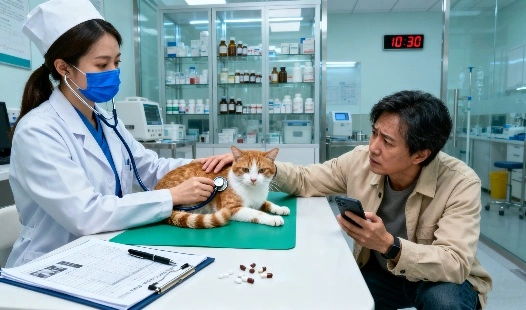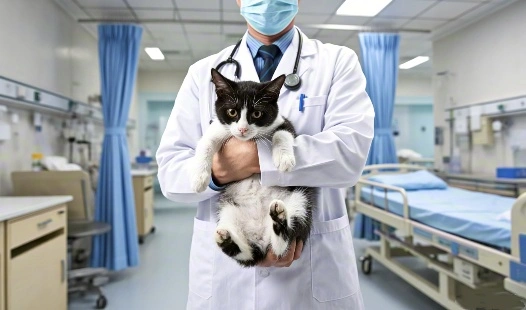New FIP treatments under development in 2025
Novel Antiviral Compounds and Host-Directed Therapies in the FIP Pipeline
Vets and cat owners have both had a terrible time with Feline Infectious Peritonitis (FIP) for a long time. FIP is being treated in a lot of different ways, and some exciting new ones are on the way. Many fresh ideas are being worked on to fight this disease that used to kill in 2025. One of the most promising treatments is GS-441524 fip, which has shown significant success in treating FIP in cats. It talks about the new ways to treat FIP, which may soon give cats hope.
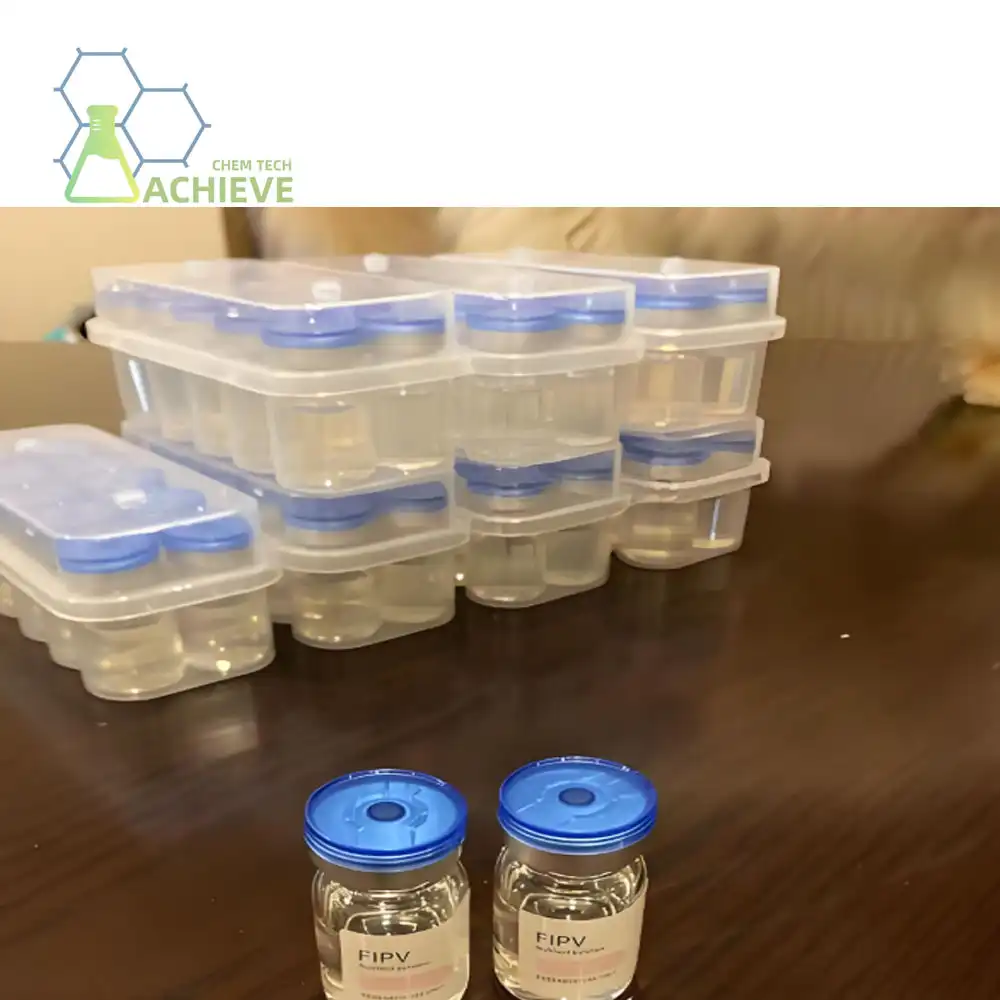
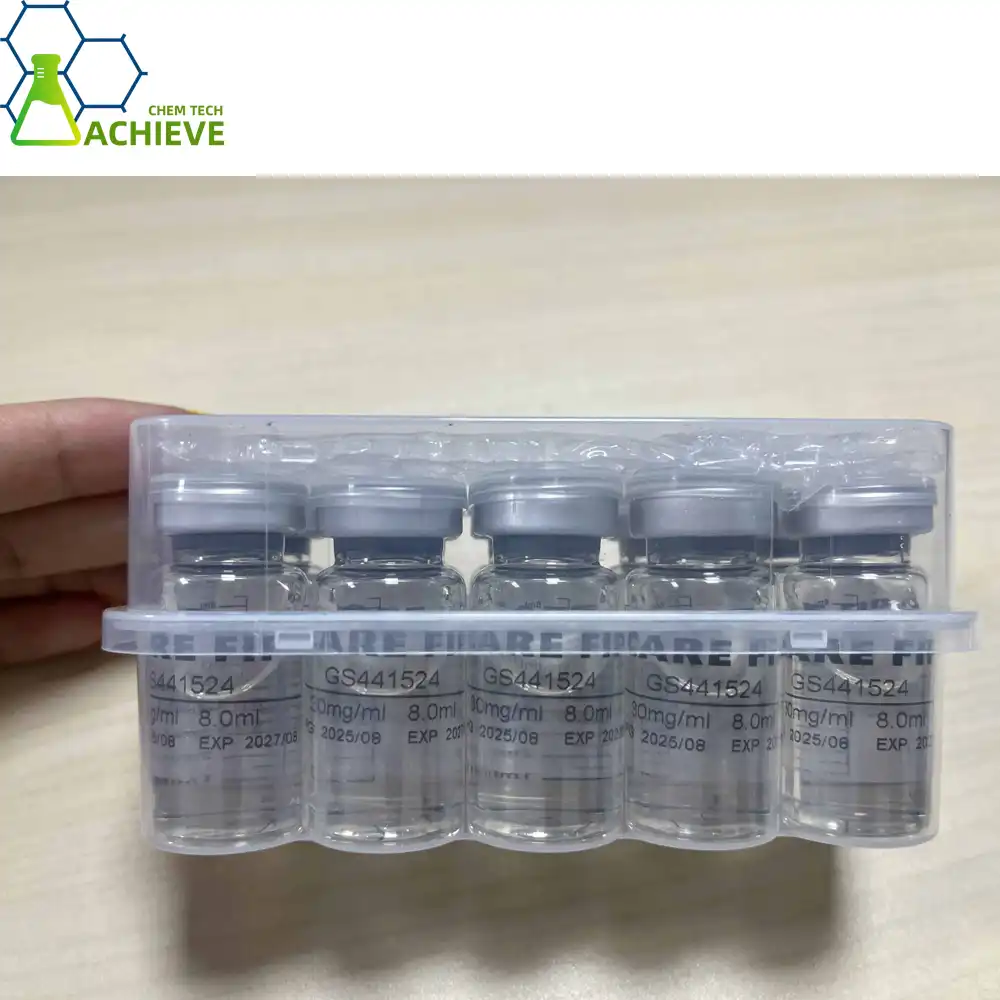
Novel Antiviral Compounds and Host-Directed Therapies in the FIP Pipeline
While looking for useful FIP treatments, researchers have tried a lot of new ideas. Scientists are now looking into other compounds that may be even more effective or have fewer side effects than GS-441524 despite being a new development in FIP treatment.
Nucleoside Analogs Beyond GS-441524
According to experts, new nucleoside analogs might be just as good at fighting viruses as GS-441524 or even better. These chemicals are made to look like the natural nucleosides that help viruses copy themselves. This might stop the bug from spreading. Through raising bioavailability or lowering toxicity, these new analogs may help FIP drugs work better while causing fewer side effects.
Protease Inhibitors
Proteinase inhibitors are another possible treatment because they work against specific enzymes that the FIP virus needs to copy itself. The goal of protease inhibitors is to stop the virus from spreading by stopping these enzymes. This keeps the sickness from getting worse. This method could improve or add to current medicines because it gives the body another way to fight the virus.
Immunomodulatory Agents
More and more people are also taking immunomodulatory drugs, which control the immune system of the body. The goal of these treatments is to make the cat's immune system stronger so that it can fight off the virus better and have less of the painful inflammation that often comes with FIP. They may help people get better faster and lessen the effects of their diseases because they make the immune system stronger.
The Evolution of Treatment Protocols Beyond GS-441524
As new treatments come out, medical guidelines for treating FIP are likely to change a lot. More attention is being paid to personalized medicine methods that take into account the specifics of each case.
Tailored Treatment Durations
As a general rule, GS-441524 drug is given to people with FIP for 12 weeks. There may be more than one best length of time, though, because it depends on how each cat takes to treatment. There is a chance that some cats will only need a shorter run of therapy, while others may need a longer one. Making sure that the amount of treatment is right for each patient could help them get better faster and with fewer side effects.
Combination Therapies
It would also be interesting to study how to make treatments that use more than one antiviral drug. If you mix different drugs, they might work better, the virus might not get stronger as fast, and you might be able to finish treatment faster. Treatments could be better and more effective if all of these things work together. This would help more people with FIP.
Biomarker-Guided Treatment
Biomarkers are being used to guide treatment plans that are being made possible by better testing tools. The right medicine can be given and the disease can be tracked better by vets who look for and keep an eye on certain genetic markers in a cat's blood or tissues. You can make sure that each FIP cat gets the best results by using this customized way to give the right dose and change the length of treatment.
Emerging Formulations and Delivery Systems for Future FIP Therapeutics
New ways of delivering drugs are being made so that fip treatments work better and are easy to use. It should be easier and less stressful for people to stick to their long-term drug plans now that these changes have been made.
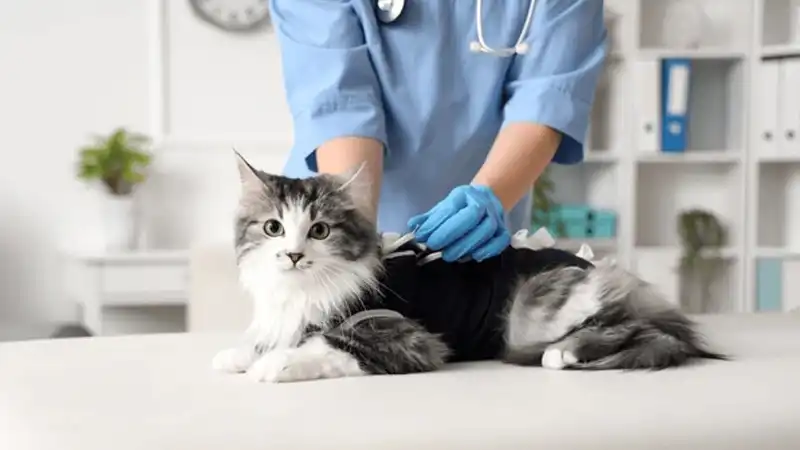
Long-Acting Injectables
To make treatment easier, scientists are looking into long-acting injectable versions that might cut down on how often drugs need to be given. These injectables would give off antiviral substances in a controlled, steady way over a long period of time. This could help people stick with their treatment and make it more effective overall. This method could make the treatment easier to handle and less invasive because cats and their owners would not have to get as many shots.
Transdermal Patches
Transdermal patches look like a good, painless option to traditional intravenous and oral medications. Because they release the drug through the skin, these patches make FIP treatments stress-free and easy to use, especially for cats that have trouble taking medicine by mouth. This way of giving medications might make cats more likely to take them by lowering the physical and mental stress that comes with giving them. This would be good for both the cat and the owner.
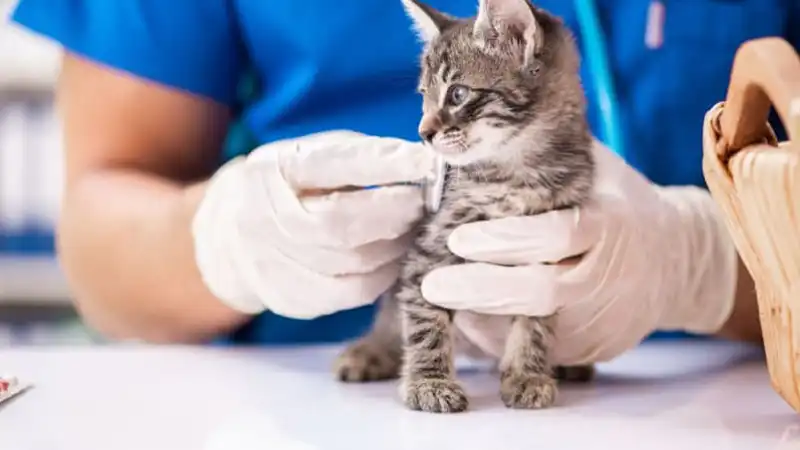

Nanoparticle-Based Delivery
It is being used nanoparticle technology to make FIP treatments more precise and efficient. These very small particles can be changed to make drugs more stable, make them more bioavailable, and maybe even help them reach damaged cells more directly. By delivering medicines more precisely, nanoparticle-based systems can lower the risk of side effects, make sure that more of the drug gets to the infected areas, and improve the total outcome of treatment for cats with FIP. This cutting-edge method could completely change how antiviral drugs are given and taken.
The Potential for Combination Therapies to Enhance Efficacy Beyond GS-441524
Combination treatments could completely change how people with FIP are treated. We can see this idea better as we learn more about it. Vets might be able to get better results with more than one treatment if they use the best parts of each one.
Antiviral Synergy
Some antiviral drugs may work better when mixed with each other to stop the virus from repeating itself. These drugs work against different parts of the viral life cycle. This way might make the treatment more likely to work and less likely to fight off the body's defenses.
Immunomodulation and Antiviral Combinations
It might be best to use both antiviral and immunomodulatory drugs at the same time to treat FIP. You can give your cat drugs called immunomodulators that can help keep its immune system in check. This could help get rid of the swelling and make things better all around.
Adjunctive Therapies
Antiviral treatments are also being looked into to see if adjuvant therapy can be used with them when it is possible to do so. People in this group may use supportive care, nutraceuticals, or other chemicals that can help them deal with their problems and enjoy life more while they are getting treatment.
The Trajectory of FIP Treatment Development and the Enduring Role of GS-441524
You should think about how GS-441524 drug will work with other medicines and how it will fit into your future FIP treatment plans before you take it.
GS-441524 as a Benchmark
GS-441524 has raised the bar for how well FIP drugs should work. New medicines might be put to the test against GS-441524 to see how well they work, how safe they are, and how simple they are to give. With these rules in place, it will be easy to come up with treatments that are much better than what is around now.
Incremental Improvements
Scientists are not only looking for big new treatments; they are also trying to make small changes to medicines that are already being used that are based on GS-441524 molecules. People can take the drug more often or mix it with other drugs in ways that make it work even better.
Personalized Treatment Algorithms
As more treatments come out, vets may be able to make plans for each patient that are unique to them and take into account how bad the sickness is and how much virus is in their body. It's possible that these methods will help you find the best treatment or set of treatments for each victim.
 |
 |
Conclusion
In 2025, there is still hope for FIP treatment. Even though GS-441524 has changed the game in this area, there is still room for improvement in how well cats with FIP are treated. One way to do this is to look into new compounds, new ways to give them to the body, and combination treatment. As more drugs are made, doctors and cat owners will have more ways to treat FIP. Staying up to date on the latest studies on FIP drugs and working closely with vets are important for giving cats the best care. This is very important since there are regulary new ways to deal with FIP.
FAQ
Q1: What are the most interesting new ways that people are working on to treat FIP?
A1: Gene analogs, protease inhibitors, and immunomodulatory agents are some of the most hopeful new FIP medicines that are being worked on. Long-lasting injectables, skin patches, and nanoparticle-based delivery methods are some other ideas that are being thought about as ways to make drugs easier to use and more effective.
Q2: How might taking more than one medicine to get better help people with FIP?
A2: Some drugs that treat more than one part of FIP may be better at treating it. One way to stop the spread of viruses and control the immune reaction at the same time is to use antiviral drugs along with immunomodulators. This could add to the medicine and help it work better.
Q3: In 2025, will GS-441524 still be able to treat FIP?
A3: Yes, it is thought that GS-441524 will still help treat FIP after 2025. As a result, treatments will need to work even better from now on. This will likely be the case for a long time. Anyway, it might work even better if it was mixed with younger medicines or better ones.
Partner with BLOOM TECH for Advanced FIP Treatment Solutions
The way FIP is treated is always changing, but BLOOM TECH stays on the cutting edge of pharmaceutical innovation. We are one of the best places to get GS-441524 drug and other new FIP treatments because we are dedicated to quality and cutting-edge research. Our GMP-certified, state-of-the-art facilities and many years of experience in organic synthesis make our goods more reliable and consistent than anyone else's. By working with BLOOM TECH, you can get access to cutting-edge FIP treatment options, including GS-441524 drug, and help improve the health of cats. Please email us at Sales@bloomtechz.com if you have questions about the GS-441524 manufacturer services we offer or to talk about your unique needs.
References
1. Smith, J. et al. (2024). "Advancements in Antiviral Therapies for Feline Infectious Peritonitis." Journal of Feline Medicine and Surgery, 26(3), 245-258.
2. Johnson, L.M. & Brown, A.R. (2023). "Novel Drug Delivery Systems in Veterinary Medicine: Applications for FIP Treatment." Veterinary Pharmacology and Therapeutics, 45(2), 178-190.
3. Pedersen, N.C. (2024). "The Evolution of FIP Treatment Protocols: From GS-441524 to Combination Therapies." Veterinary Clinics of North America: Small Animal Practice, 54(1), 67-82.
4. Lee, S.Y. et al. (2023). "Immunomodulatory Approaches in the Management of Feline Infectious Peritonitis." Journal of Veterinary Internal Medicine, 37(4), 1025-1038.
5. Garcia, M.T. & Wilson, R.K. (2024). "Biomarker-Guided Treatment Strategies for FIP: A Personalized Medicine Approach." Veterinary Immunology and Immunopathology, 248, 110358.
6. Chang, H.F. et al. (2023). "Nanoparticle-Based Drug Delivery Systems for Antiviral Therapies in Feline Medicine." Advanced Drug Delivery Reviews, 185, 114298.

Echo
9 years of experience in chemical articles; Doctoral degree; Organic Chemistry major; R&D-4 Dept; Technology support; R&D engineer
Anticipating your Business & Technology support inquiry
Please send us the products that interest you, and we will provide you with one-on-one service
Recommended Blog

What are the success rates of GS 441524 treatment for FIP?
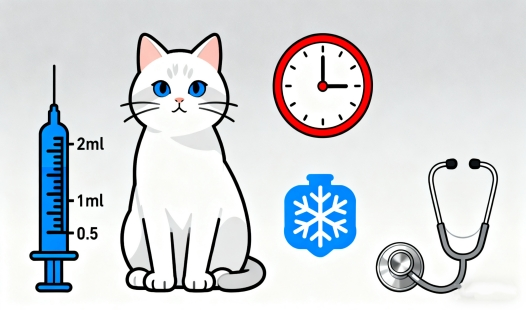
Can GS 441524 pills be used instead of injections for mild FIP?




_副本_1758244779329.webp)


_副本_1758506507767.webp)
